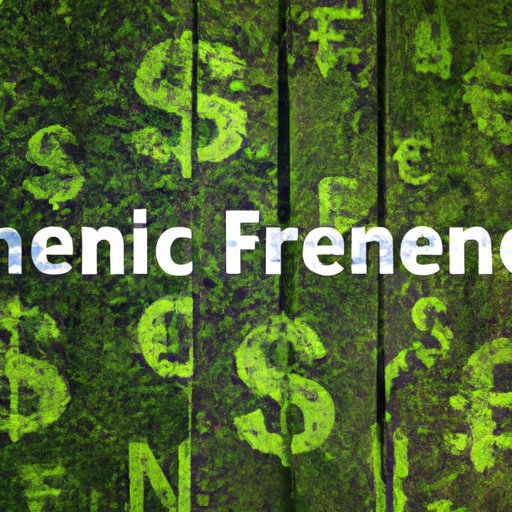Introduction
Green financing is a concept that has become increasingly popular in recent years as businesses, investors and governments alike seek to reduce their environmental impact. Green financing is defined as “the use of financial instruments and services to provide funding for projects and activities related to environmental protection and sustainability”.1 In other words, it is a form of financing that allows businesses to invest in environmentally friendly initiatives such as renewable energy or energy efficiency projects.
The benefits of green financing are numerous. For businesses, investing in green financing can help to reduce their carbon emissions, improve their public image and create new investment opportunities. This article will explore why businesses should invest in green financing, examining the impact on the environment, the risks and opportunities associated with this type of financing, and the different types of green financing available.

Understanding the Impact of Green Financing on the Environment
One of the main reasons why businesses should invest in green financing is because of its positive impact on the environment. Green financing can help to reduce carbon emissions by providing businesses with the funds necessary to invest in renewable energy sources and energy efficiency projects.
For example, a study conducted by the International Renewable Energy Agency (IRENA) found that renewable energy investments could lead to a reduction of up to 21 gigatons of CO2 emissions between now and 2050, which would be equivalent to almost one-third of the total global emissions in 2018.2 This demonstrates the significant potential of green financing to reduce carbon emissions and contribute to a more sustainable future.
Furthermore, green financing can also help businesses meet the United Nations’ Sustainable Development Goals (SDGs). The SDGs call for businesses to take action to ensure a sustainable future for all, and green financing can be used to fund projects that support these goals, such as renewable energy projects or projects that promote sustainable consumption and production patterns.3

Examining the Risks and Opportunities of Investing in Green Financing
When considering investing in green financing, businesses must assess the risks and opportunities associated with this type of financing. On one hand, there are certain risks associated with green financing. For example, green financing often involves higher upfront costs, as well as the risk of technological failure or regulatory changes that could disrupt the project.4 Additionally, some green financing investments may not generate returns quickly, which could be an issue for businesses that need short-term returns.
On the other hand, there are also many opportunities associated with green financing. Investing in green financing can help businesses to improve their public image, as customers and other stakeholders are increasingly looking for businesses that prioritize sustainability. Additionally, green financing investments can provide long-term returns, as well as access to capital for businesses that may not be able to secure traditional forms of financing.5 Furthermore, green financing can also open up new markets and create jobs, as businesses can use the financing to invest in green technologies, products and services.

Investigating the Different Types of Green Financing Available
There are several different types of green financing available for businesses to consider. Equity-based financing involves the issuance of shares or equity to investors, who receive a stake in the business in exchange for their investment. Debt-based financing involves issuing bonds or taking out loans, while structured financing involves blending debt and equity instruments to create a custom financing solution.
Each type of green financing has its own advantages and disadvantages, and businesses should consider which option is best suited to their needs and goals. For example, equity-based financing is ideal for businesses that need long-term capital but don’t want to take on additional debt, while debt-based financing is better for businesses that need short-term capital and are willing to take on additional debt.
Exploring How to Access Green Financing Options
Once businesses have identified the type of green financing that is most suitable for their needs, they must then decide how to access these options. The first step is understanding the requirements for accessing green financing. Depending on the type of financing chosen, businesses may need to provide detailed information about their operations, such as financial statements, business plans and environmental assessments.
The next step is finding potential investors or lenders. There are a number of organizations and institutions that specialize in green financing, such as banks, venture capitalists and government agencies. Additionally, businesses can look for angel investors or crowdfunding platforms that provide green financing opportunities.
Conclusion
Green financing is an increasingly important concept for businesses to understand, as it provides a number of benefits such as reducing carbon emissions, improving public image and creating new investment opportunities. Businesses must assess the risks and opportunities associated with green financing before deciding which type of financing is most suitable for their needs. Once they have identified the type of financing required, they must then find potential investors or lenders to access the financing.
Overall, green financing is an important concept for businesses to understand and take advantage of, as it can help them to achieve their sustainability goals and create a positive impact on the environment.
(Note: Is this article not meeting your expectations? Do you have knowledge or insights to share? Unlock new opportunities and expand your reach by joining our authors team. Click Registration to join us and share your expertise with our readers.)
